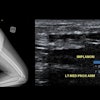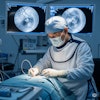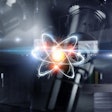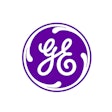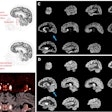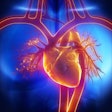
NEW YORK (Reuters Health), Sep 1 - A sequential protocol of chemotherapy, autologous stem cell transplantation, and hyperfractionated whole brain radiation therapy is highly effective as first-line treatment of primary central nervous system lymphoma (PCNSL), German researchers report.
"Ours is the first protocol to use high-dose alkylating agent-based chemotherapy and autologous stem cell transplantation within first line therapy of these difficult-to-treat CNS lymphoma patients," lead investigator Dr. Jurgen Finke of the University Medical Center in Freiburg told Reuters Health.
Dr. Finke and colleagues enrolled 30 patients with PCNSL with an upper age limit of 65 in phase I (nine patients) and phase II (21 patients) clinical trials of a multimodal treatment regimen. None of the patients had symptoms of systemic lymphoma at the time of enrollment.
Specifically, patients received three cycles of methotrexate, followed by cytarabine and thiotepa. This was followed by stem cell harvest at day 40. Patients then received high-dose carmustine and thiotepa. Stem cells were transplanted at 58 days. Finally, hyperfractionated whole brain radiation for consolidation was administered beginning on day 90.
Dr. Finke and colleagues report, in the August issue of the Journal of Clinical Oncology, that 28 patients responded to methotrexate. Six patients had complete remission, 15 patients had partial remission and seven patients had stable disease with clinical improvement after methotrexate therapy.
"We saw considerable improvement of disease-free survival compared to radiation therapy with or without additional methotrexate or other chemotherapy," Dr. Finke said.
Of the 26 patients who proceed to cytarabine and thiotepa, 10 had a complete response, 14 had a partial remission, one patient had stabilization of disease with clinical improvement, and one patient had disease progression.
Twenty-three patients went on to high-dose chemotherapy and stem cell transplantation. Of these, 15 had complete remission and eight patients had partial remission.
Finally, 21 patients underwent whole brain radiation. All 21 had complete remission of PCNSL.
There was one death during methotrexate therapy from acute liver failure. High-dose chemotherapy was generally well-tolerated, although all 23 patients developed WHO grade 4 neutropenia and thrombocytopenia. There was one case of reversible cognitive impairment with radiation.
Dr. Finke said the comparatively low incidence of adverse effects was "because of the sequential use of the chemotherapy instead of mixtures of combined therapies (and) by omitting intrathecal chemotherapy and by placing fractionated radiation therapy at the end of the protocol after completion of the chemotherapy."
Dr. Finke's team calculates the five-year survival probability to be 69% for all patients, and 87% for patients who received high-dose chemotherapy plus stem cell transplantation. The five-year probability of relapse-related death is 21% and 8.7% for patients who received high-dose chemotherapy and stem cell transplantation.
The current median survival rate is 36-60 months with methotrexate and whole brain radiotherapy.
By Martha Kerr
Last Updated: 2006-08-31 13:58:34 -0400 (Reuters Health)
J Clin Oncol 2006;24:3865-3870.
Related Reading
Chemo for leukemia doesn't harm brain development, August 30, 2006
Copyright © 2006 Reuters Limited. All rights reserved. Republication or redistribution of Reuters content, including by framing or similar means, is expressly prohibited without the prior written consent of Reuters. Reuters shall not be liable for any errors or delays in the content, or for any actions taken in reliance thereon. Reuters and the Reuters sphere logo are registered trademarks and trademarks of the Reuters group of companies around the world.


